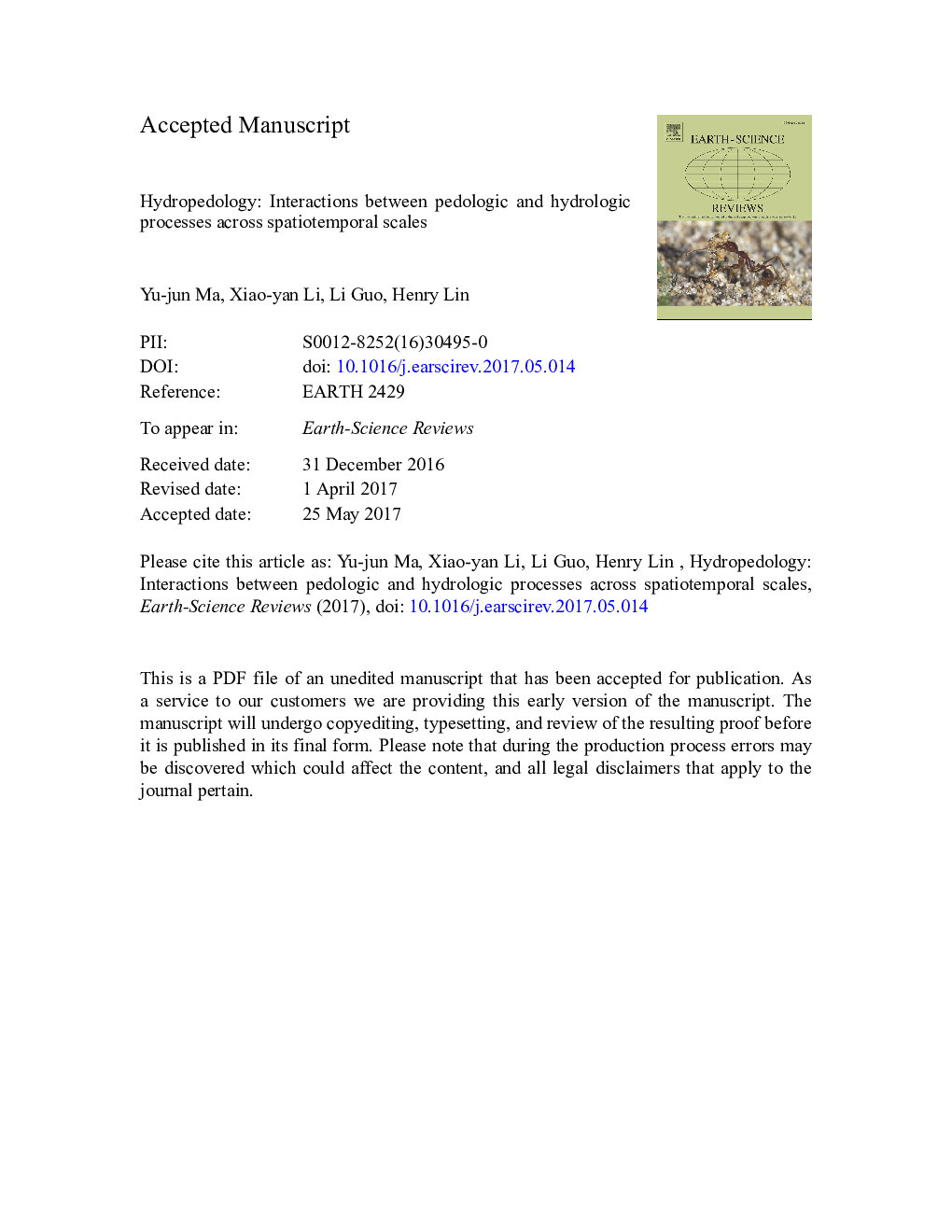| Article ID | Journal | Published Year | Pages | File Type |
|---|---|---|---|---|
| 5785082 | Earth-Science Reviews | 2017 | 57 Pages |
Abstract
Hydropedology is an emerging intertwined branch of soil science and hydrology that studies interactive pedologic and hydrologic processes and properties in the Earth's Critical Zone. It aims to bridge disciplines, scales, and data, connect soils with the landscape, link fast and slow processes, and integrate mapping with monitoring and modeling to provide a holistic understanding of the interactions between the pedosphere and the hydrosphere. This paper reviews major research findings in this field achieved in the past decade (mostly since 2012). A three-dimensional framework (spatial, temporal, and methodological) is used to synthesize recent hydropedological investigations over a broad range of spatiotemporal scales. In spatial dimension, soil architecture, ranging from the microscopic to the megascopic levels, exerts an important control on hydrologic processes and biogeochemical dynamics. In temporal dimension, both short-term soil functioning processes and long-term soil pedogenic processes are impacted by hydrologic processes, and vice versa. In methodological dimension, linking mapping with monitoring, modeling, and managing can accelerate integrated and sustainable use of soil and water resources. Three major challenges are identified for advancing the frontiers of hydropedology, including 1) hierarchical framework for 3-D spatial scale bridging, 2) quantitive linkage for multiple temporal scales, and 3) comprehensive integration for methodological breakthrough. It is hoped that this review can stimulate continuous efforts in advancing hydropedology and integrated soil and water sciences.
Related Topics
Physical Sciences and Engineering
Earth and Planetary Sciences
Geology
Authors
Yu-jun Ma, Xiao-yan Li, Li Guo, Henry Lin,
